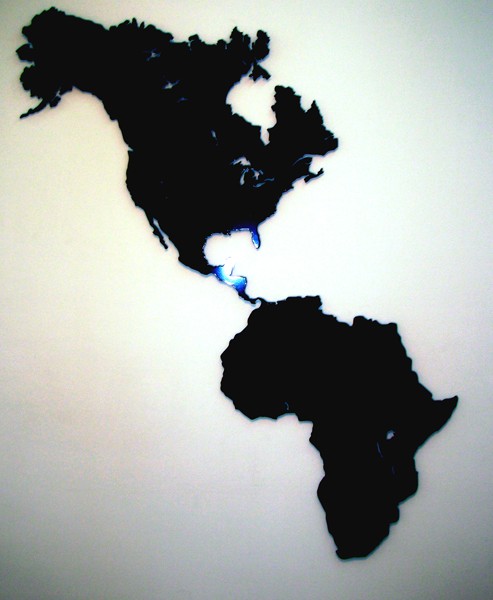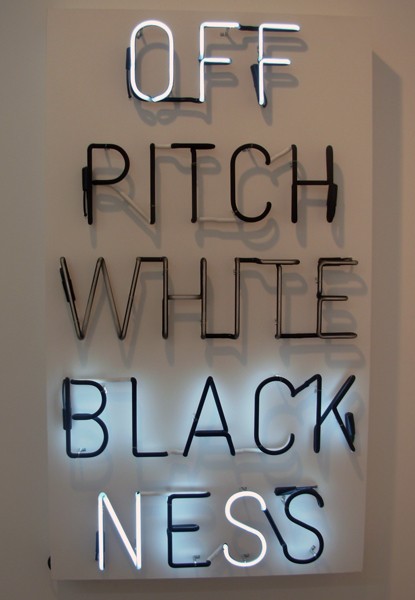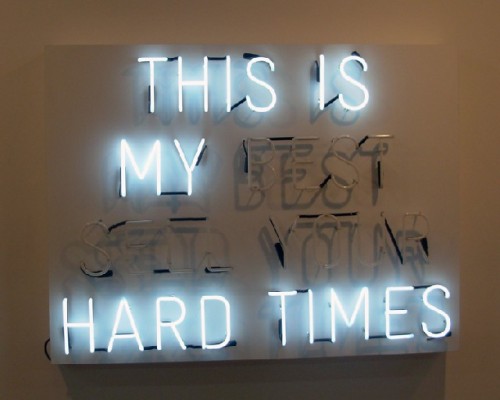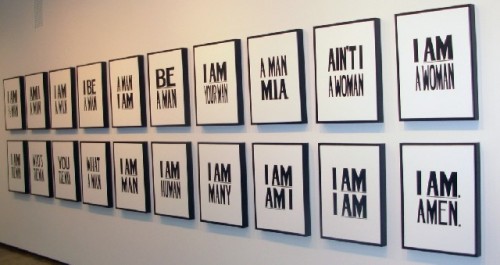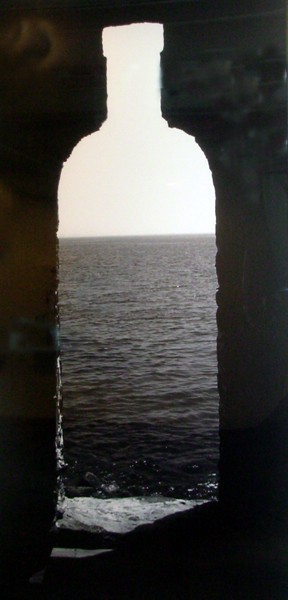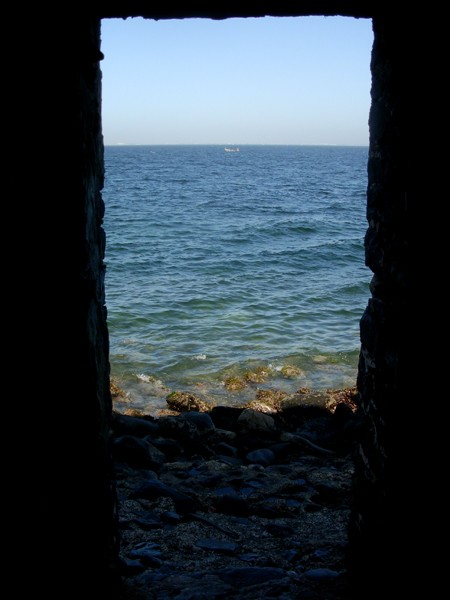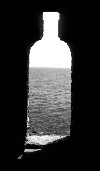Hank Willis Thomas at Jack Shainman Gallery
Pitch Blackness
By: Charles Giuliano - Mar 27, 2009
Hank Willis Thomas: Pitch Blackness
Jack Shainman Gallery
523 West 20th Street
NY, NY, 10011
212 645 8316
The recent exhibition by a young African American artist, Hank Willis Thomas, "Pitch Blackness," at Jack Shainman, was provocative and insightful but also eclectic and diverting.
Having stated that he never learned to draw and paint the artist applies a vivid sensibility to finding ways to divert and deconstruct the glut of images spewed out by marketing, advertising, and the often racist subtexts of popular culture. By collaborating with others, often commercial sign painters and fabricators in a variety of media, he creates works of art by functioning as an art director.
He diverts the process of those in a room coming up with an advertising campaign, think "Mad Men," by taking the final image and marketing strategy then turning it back on itself. In a series of earlier works, in which these tweaked and appropriated billboards were placed in the actual context of urban advertising, blasé New Yorkers passed them by with hardly a glance. The artist introduced a number of riveting variations of the familiar Air Jordan logo of the basketball player driving to the hoop for a spectacular slam dunk. In some variations the figure is dangling from a noose, a reference to lynching, or has a third leg humorously alleging to black male endowment.
The recent Shainman show served as a gathering and collection of recent conceptual projects. It resulted in viewers taking on a series of individual works while absorbing and filtering their separate impact. Each piece is about a different approach to the common theme of race, history, and identity. Given all of these separate experiences it was challenging to derive a cohesive sense of the impact of the exhibition. Its diverse and eclectic approach inducess the conclusion that this is the evolving process of the development of a young artist with many interesting ideas. But that the oeuvre, in general, has not focused into a singular vision. The artist, who is certainly one to watch, has not really hit his stride.
Many, if not the majority of works in the show, however, have punch and power. At first glance, for example, the black, large scale cutouts of the continents North and South American have a benign impact. Then there is that "ahah" moment when we discover that the lower continent is in fact Africa. This evokes the witty conflation of a physical and geopolitical send up of the expression "African American." Here we see it literally.
The artist enjoys deconstructing seemingly straight and benign ads. The best example in this show is a makeover of the endless variations on the shape of a bottle of Absolut vodka. Here the artist has evoked that logo image by manipulating the door of the slave house on Goree Island, in Senegal,. We were in Senegal recently and viewed the "Door of No Return." Exiting that door individuals were boarded on slave ships bound for America. The image, which Thomas has appropriated, is an icon of the Middle Passage. Having been there and had direct experience of the slave house in Senegal conjured particularly strong emotional responses. The piece is quite powerful and brilliant in its simplicity.
One wall was devoted to a series of variations on the title of the Sojourner Truth poem "Ain't I a Woman." The series was more graphic and conceptual than visually engaging. These were updated takes on the traditions of concrete poetry. In other works the artist plays with text using neon that takes a phrase and manipulates it using alternate lighting of different segments. We are familiar with this approach from the neon works of Bruce Nauman. Only the context is changed while the visual concept is too readily familar. The artist also appropriates stock images, such as an early photograph of Michael Jordan, which conflate into his own work through their titles. He encourages us to rethink these images but the impact is at best mixed.
This is work by a gifted and promising artist but there is a need to focus, settle down, and dig deeper. Too often this exhibition felt like a pastiche of interesting ideas but hardly a Michel Jordan slam dunk.

